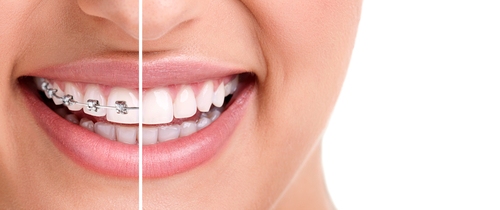
After you’ve finished orthodontic treatment, you’re ready to acclimate to your new life with a straight smile. And while we can give you plenty of tips for life after braces, these are primarily aimed at making you comfortable. Ensuring that your treatment results stick around requires some additional work. Teeth shift, and they need ongoing maintenance to continue forming a straight smile.
The unfortunate truth is that teeth always require some kind of guidance to stay straight after orthodontic treatment. If you quit wearing your retainer, your teeth will eventually begin to shift. In fact, most adult orthodontics patients actually had braces when they were younger. As time passes, factors emerge that we just can’t control – and they end up impacting our bites. Keep reading to learn how to minimize their effects, and get in touch if you have any questions.
Why Do Teeth Shift?
Your teeth are always working to get back to their original positions. So not wearing retainers after orthodontic treatment is the primary cause of teeth shifting – but we’ll talk more about that in a moment. There are other factors that can contribute to the problem, including:
- Wisdom teeth – The reason wisdom teeth are so often extracted is because they can pose big problems for your surrounding teeth. Wisdom teeth are likely to erupt at unhealthy angles and place pressure on adjacent teeth. If your wisdom teeth begin erupting and if they push on your other molars, that can change the alignment of your bite.
- Bruxism – We all get stressed – and we all have different ways of releasing that anxiety. Many adults have a tendency to clench and grind their teeth. If this grinding goes on unchecked, it can lead to gum recession. Losing gum tissue can mean your teeth having more room to move around, and shift into different positions. Pressure from grinding can also affect the position of the upper arch.
- Tooth loss – Tooth loss can trigger a variety of other dental problems. Your bite is no longer in harmony when a tooth is missing. The adjacent teeth shift and move toward the gap left behind. This can change your entire bite and affect its appearance and function. You should treat missing teeth as soon as possible to prevent additional damage from taking hold.
- Gum disease – Periodontal disease is extremely harmful to teeth, gums and the jaw bone. With disease comes the destruction of gum tissues and bone tissue. Teeth lose their foundation and are more likely to shift. Do everything possible to prevent gum disease – brush and floss regularly, schedule routine dental exams, and avoid harmful habits like smoking.
Top Ways to Keep Teeth Straight Post-Braces
Wear Your Retainer
Understand the way braces work – they apply gradual pressure to move teeth into new, healthier positions. Once the braces are off, the teeth no longer have a source of constant pressure. Different patients have an easier or more difficult time keeping their teeth straight. For example, if there’s more space in the jaw, teeth are more likely to shift.
Your retainers are the simplest way to keep your teeth in their beautiful new formation. Patients often have a fixed lower retainer and a removable upper retainer, so it’s just the upper that requires patient effort. No matter your retainers, make sure you follow your orthodontist’s instructions. It’s likely that you’ll need to wear the retainer all the time to start. After you’ve done that for long enough for your straight teeth to solidify somewhat, you’ll be able to wear it only at night. If you’re concerned about the appearance of a retainer, ask about clear alternatives.
Make sure to clean your retainer properly and daily. Keep your retainer in great shape and always keep it safe. Lost retainers are a common problem, and it can become expensive to continually replace yours. If you’re eating out, make sure to put your retainer in a case, rather than a napkin – this makes it likely to get thrown out. Dogs also love to chew on retainers, so keep yours in a case! If you do lose or break your retainer, replace it right away.
In the years after braces, you may want to switch from a nighttime retainer to a mouth guard. If you have a problem with grinding your teeth, a night guard will keep your enamel protected while also maintaining straight teeth.
Engage with Your Dental Health
Like we mentioned earlier, tooth loss and gum disease are big components behind shifting teeth. Prevent those dental problems to help maintain your smile. Make sure that you brush and floss regularly, and schedule regular dental exams. Bring your retainer to your exams so that your dentist can make sure it’s not damaged and is still working properly.
Immediately after braces is a great time to consider your oral hygiene regimen. Effective brushing and flossing (daily) is the best defense against plaque. And preventing plaque buildup allows you to avoid gum disease and cavities. You’ve been extra vigilant during braces to clean around brackets and wires – keep up those habits now that your braces are off.
Take Notice if Teeth Shift
If your teeth are changing, you should react. Get in touch with your orthodontist if something seems off. It is important to know that teeth do typically shift gently immediately after you get your braces off. Your orthodontist will have planned for this movement and anticipated it, so this should not disrupt your smile.
Don’t leave yourself feeling uncertain or nervous about the straightness of your smile – get in touch if you’re ever looking for guidance!





